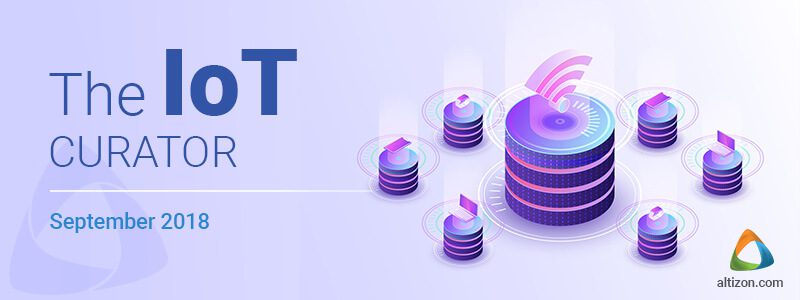IoT Curator – September 2018

Highlights
- Difference Between IoT and IIoT
- The rise of the Digital Twin
- The Convergence of 5G, AI and IoT
Thank you so much for your support and enthusiasm for our previous newsletters. This month we present more insights ongoing in the world of ‘IIoT and 5G.’ Here is hoping that you get key takeaways from this month’s newsletter.
IoT vs IIoT Differences You Must Know
Business opportunities presented by the Internet of Things (IoT) are among the most debated topics, as these are considered important for a broad range of consumer and industrial applications. Leading market research firms already estimate that by 2020 there will be over 20 billion installed end-point devices worldwide, defined as part of IoT or IIoT systems. Although the forecasted number is growing every year, it is not clear whether these figures correctly refer to deployments in which segments. Factors such as rapidly decreasing sensor prices, cloud devices, and superior big data technology innovation are driving rapid adoption of IoT technologies.
But right from connecting household light bulb to reading data from the remotest windfarm, sensing your heartbeat while you are jogging in the morning to alerting an unauthorized entry of an operator in the hazardous area all fall under IoT. Consumer IoT like home automation are wearables taking the limelight while industrial devices like robots and solar farms are generating huge opportunities. So, it’s important to understand the differences between consumer IoT and Industrial IoT and nuances thereby. This article goes into details of types of end devices, ecosystem architecture, operation safety and reliability, financial benefits, and security aspects of IoT.
Digital Twin: The Physical World Meets The Digital World
Creating a prototype, building a simulation or new age digital twins are ways to test the manufacturability of a product or process. With IoT becoming a heart of the ecosystem, digital twin concept, although not new, is taking a center stage in digital manufacturing. Instead of working with unknowns in the systems, IoT enabled systems are providing huge amounts of data to build real digital twins of any system thereby empowering designers to work out the details and responses of the system before you actually build one in real. This is a huge cost saver as well as the enabler to bring precision in the overall process.
According to a recent report, 48% percent of organizations that are implementing the IoT is already using, or plan to use digital twins in 2018. In addition, the number of participating organizations using digital twins will triple by 2022 (According to Gartner). This article dives deep into the role of digital twins and technology enablers for the same.
Digitization driven by IoT, AI, and 5G
As a general rule of thumb, in the case of energy and energy exploration, bigger is better: the larger the machinery, the deeper the dig, the greater the production yield. But this massive scale can pose major challenges too. By necessity, assets like wind farms, oil rigs, and mines are often located in remote and harsh environments, posing safety risks to human workers during construction, inspections, and repairs. Equipment bulged with sensors can collect a ton of data, but without reliable high-speed wireless infrastructure, transmitting it can be slow and unwieldy, straining the system’s bandwidth.
But all that is changing fast, thanks to rapidly evolving and emerging IoT, AI, and 5G technology. Collectively, they’re transforming the energy sector in fundamental ways, by enabling energy and mineral harvesting optimization, predictive and automated maintenance, high-volume and low-latency data delivery, and smarter power grid management for better allocation of energy resources to countries, cities, manufacturers, and consumers.
In one case, GE Renewable Energy is taking a different tack to optimize wind power by creating digital wind farms. These “digital twins” are virtual models of actual wind farms that gather data from the physical turbines during operations and analyze potential settings to determine optimal efficiency. GE claims that its digital-twin technology will boost energy production by 20% annually, generating $100 million more profit over the lifespan of a typical 100-megawatt wind farm. That’s how powerful and fruitful it could be.
This article investigates how a convergence of IoT, AI, and 5G is disrupting the energy sector at every stage, from production to refinement and consumption and in the coming decade, how you can expect to see this sweeping digital transformation pay off in lower-cost, lower-risk, and higher-yield businesses.



